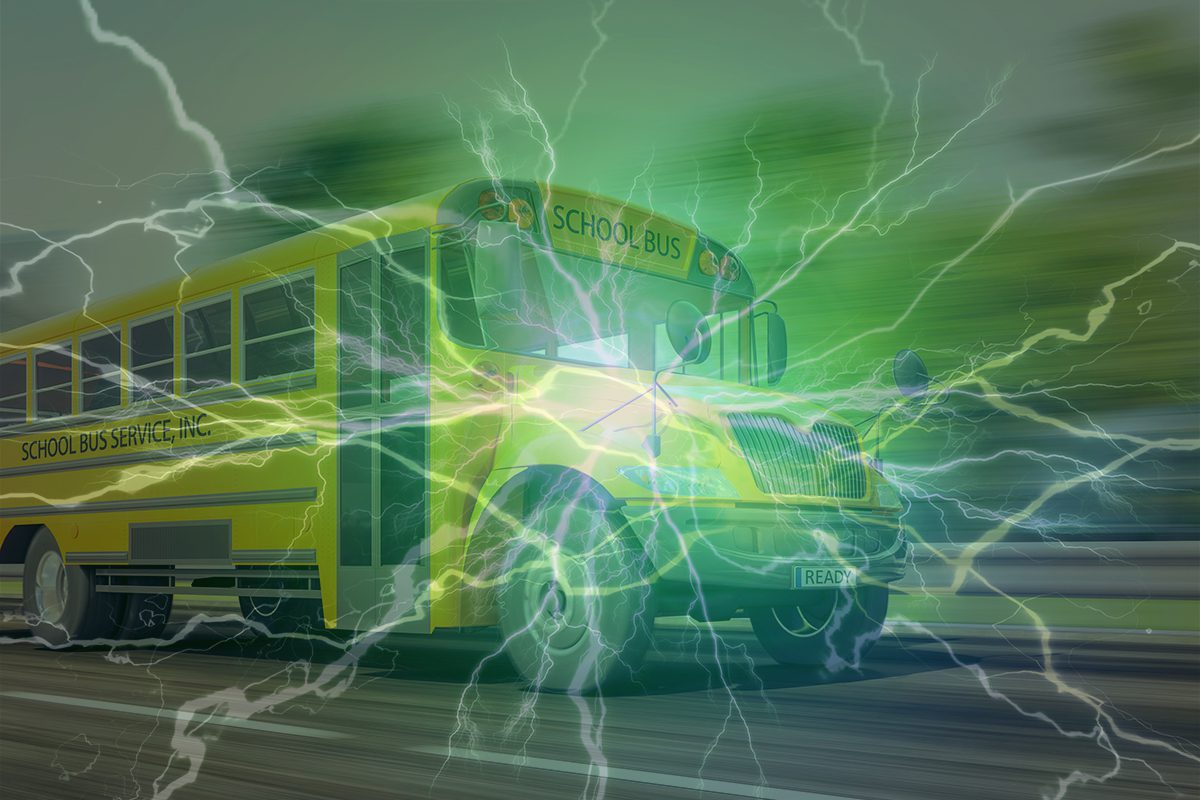Concerns about the effects of transportation-related emissions are increasingly taking center stage in terms of policy change and funding availability. Reform is charging forward on both the state and federal levels, and with the recent passage of the Bipartisan Infrastructure Law, many transportation sectors are seeing the possibilities of zero-emission transport becoming an attainable reality.
For the school bus industry, reducing emissions and the detrimental effects they have on school children — and communities at large — has been a top priority for some time. But with districts stretched thin in terms of funding, the choices have been limited on how to make each ride to and from school that much safer. With the right support and guidance, school districts can benefit from rebates as part of the U.S. Environmental Protection Agency’s (EPA) Clean School Bus Program.
The infrastructure law authorizes the EPA to offer rebates to schools to replace their existing school buses with clean and zero-emission (ZE) models, including battery-electric school buses. Without this type of funding, electrifying your fleet might seem like a pipe dream, but to make it a reality, there are several red-tape-covered hoops to jump through. For pupil transportation fleet managers, this red flag stops them in their tracks — with all the hats they are already wearing, grant/funding applications can take too much time and cause too many headaches. Even with the money in hand, there are permits that need to be obtained, site visits that need to be made, utilities to contact, and more.
But there is another option. Companies like eCAMION can helps school access some of the $500 million set aside for the Clean School Bus Program. This funding can be used to secure up to 25 new clean school replacement buses with $325,000 allotted for each new purchase, as well as $20,000 for each charger. On top of that, eCAMION can help your district with any costs that the funding does not cover, including any installation, service, and permit expenses.
Our team also streamlines the process by developing and submitting the funding application and assisting in the selection of the best school buses to meet your operational needs — we are technology agnostic and will work with any school bus OEM. We also manufacture and install the electric bus charging and energy storage equipment ourselves, as well as maintaining the systems.
The eCAMION Energy Hub offers 600 kW of output power, allowing for fast charging of buses without the need to upgrade your current electrical grid infrastructure. The storage system also reduces utility costs by outputting electricity to the facility during peak times and charging the unit during off-peak hours, reducing operational costs by 30-50%. We also remotely monitor, configure, and diagnose the system of both the Energy Hub and chargers.
For many school districts, the next decade will see a ramping up of zero-emission school bus purchases, so enabling future integration of other related charging infrastructure is a must. Renewable power, such as solar, can be built on top of the Energy Hub’s infrastructure, as well as the addition of an emergency backup power system to provide a reliable electrical infrastructure integration in the case of power outages.
The path to zero emissions is not going to be easy, but with the right provider, like eCAMION, your end goal — cleaner air for your students — is attainable.
For more information on eCAMION’s products and services, please contact Tanya Krackovic via or email or at (647) 881-6781.


